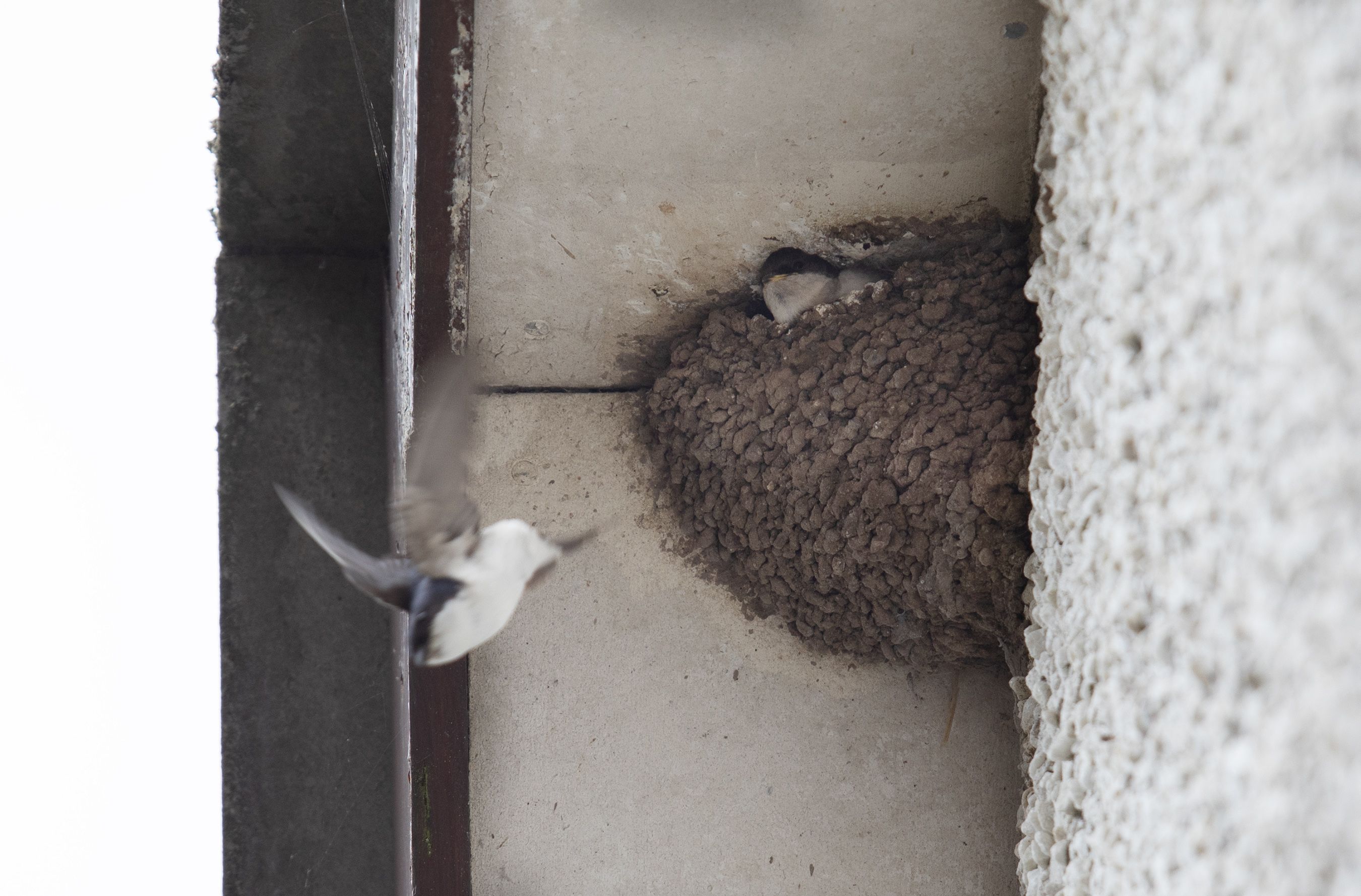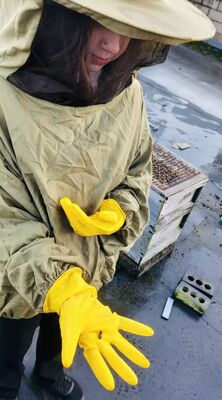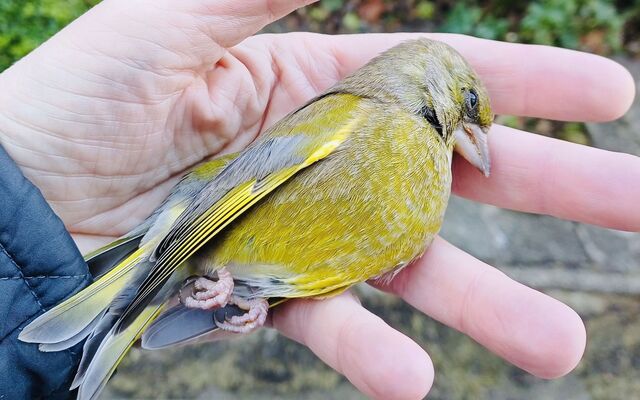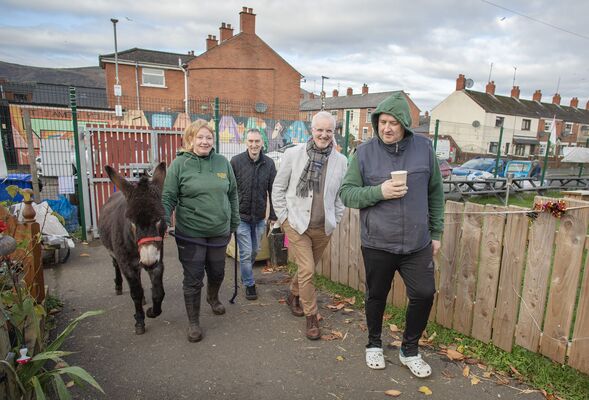AN enriched life – isn’t that what we all strive for? Whether it’s sitting down on the settee to watch a good film, going to a gig or for a meal, or just a walk in the park, it’s often that wee bit extra that makes the difference. And sometimes, if you’re lucky, that wee bit extra comes free-of-charge and without you even asking for it.
That’s what’s happened to Andytown News group editor Robin Livingstone this summer – by the power of two. While Dúlra’s house lies forlorn and devoid of house martins – as well as their even more aerially evolved insect-eating cousins the swifts – Robin has managed to get TWO families of house martins nesting under his roof.
It helps of course that he lives in Hannahstown, which is home to one of the healthiest populations of house martins in the city – if not on the island. Robin’s white-topped house must have seemed like freshly formed limestone cliffs to the birds when it was built. They love to build their mud nests in the tip of the upside-down V in the gable eaves because there’s a good bit of grip in there. And when you use wet mud and saliva to attach your nest to a wall, you need all the help you can get!
DEMANDING: The rapidly growing fledglings take a lot of feeding as they prepare to leave the nest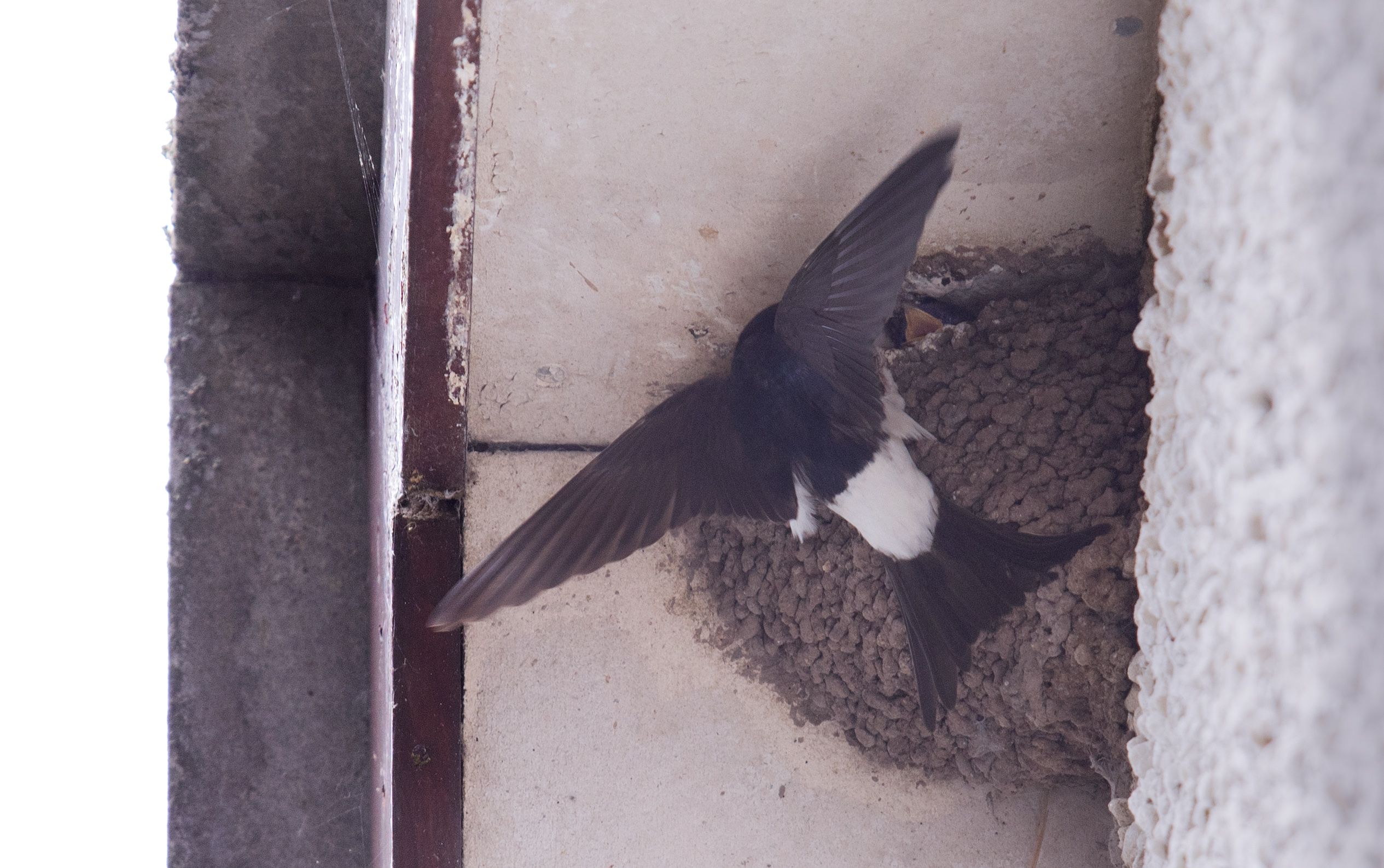
Dúlra thinks a sign should go up in Hannahstown: ‘Home of the House Martin’ (bilingual of course), and maybe the Council should reward residents for their hospitality by knocking a few quid off their rates for every nesting martin!
Robin has had permanent residents in the west-facing gable wall of his house, but only very occasional residents in the east gable. And this year he’s claimed the delightful double for the first time in quite a while, the second nest almost certainly built by last year’s fledglings from the opposite wall. It’s the right place for them – their Irish name refers to their favourite place to nest: gabhlán binne means martin of the gable wall.
Robin and his own brood love to see these aerial masters arriving back in Ireland from Africa every May. They gather mud from the banks of little streams and pools in the surrounding fields – look at the photo and you can see that each individual mouthful is a mini-mound on the dimpled nest.
In these brilliant pictures by Thomas McMullan, you can see the youngsters’ heads popping out of the nests. Within a few days they will be airborne – and when the parents lay a second clutch, these youngsters will help raise their new siblings by bringing them food like good big brothers and sisters.
House martins normally squeeze in two broods – the second lot will hopefully leave the nest in September and within weeks will be undertaking that long journey back to Africa.
If he’s pleased to see them come, Robin is philosophical in the autumn when they leave on their 5,500-mile trip back to Namibia in southern Africa, where Hannahstown birds have been mist-netted and ringed. In fact, the thing Robin likes most about these beautiful visitors is that they’re an airborne calendar of the changing seasons.
HOME DESIGNS: Each little dimple on the nest represents a house martin-sized mouthful of wet mud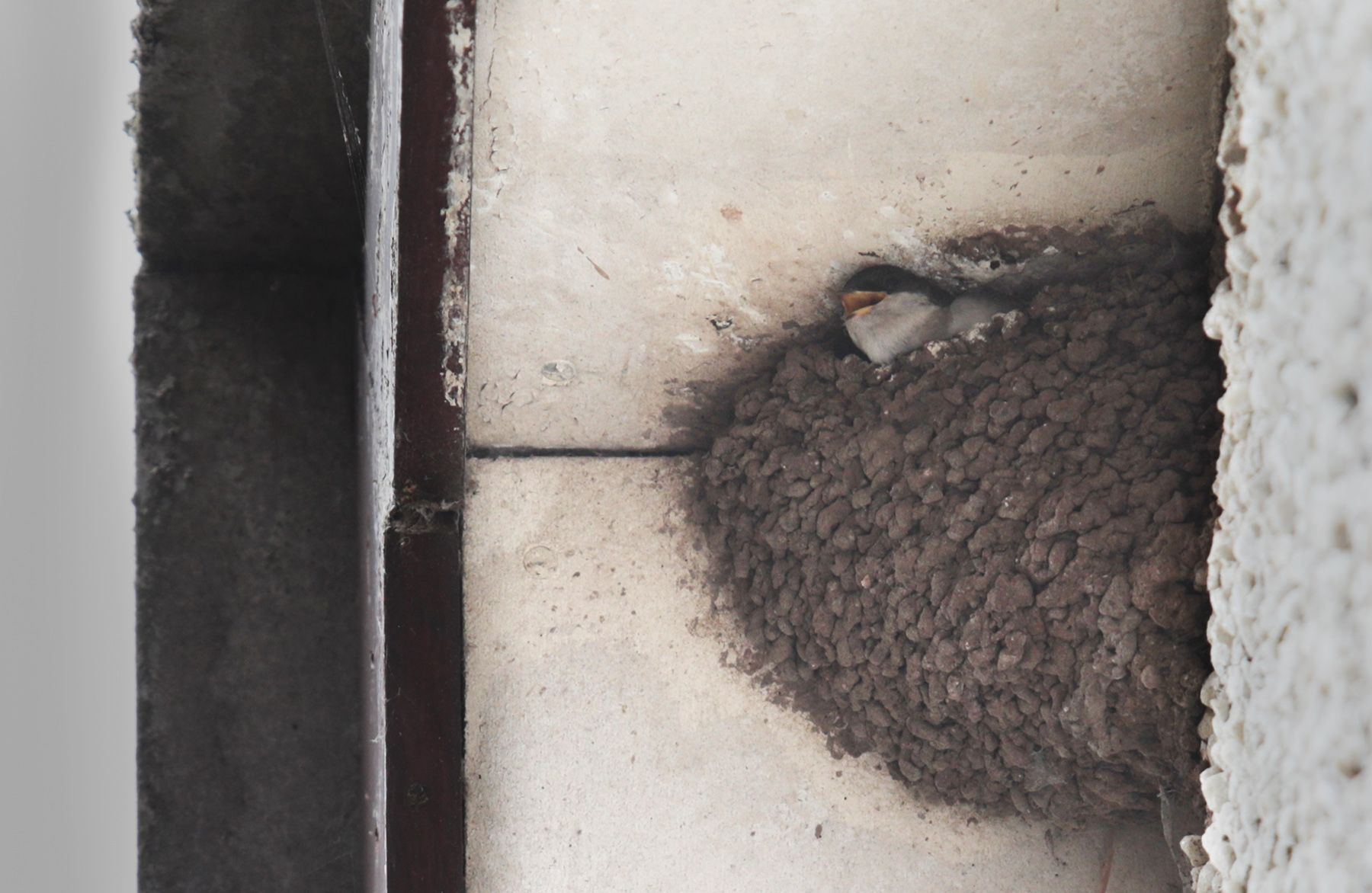
“You're sad to see them go, but in kind of a sweet way – especially when you know that they’re setting off with so many young birds that were reared at your house and your neighbours’ houses,” says Robin.
“They arrive in May when the heat is starting to build and through into June and July as it gets warmer you can see them gradually get higher in the sky in search of the winged insects and aphids they feed on. Mostly they feed close to the house and there’s nothing I enjoy more than to watch them soar on the thermals on the hot days or drop lower in the cold air come late summer and early autumn. They’re like an aerial barometer,” laughed Robin.
“This is such a great area for them and at times I’m sitting looking at 30, 40 or 50 house martins and their young flying joyfully over my head. Sometimes you’d swear they were doing it for the pure fun of it and not just feeding. In a blue sky on a hot day they can be specks, but my favourite time of year for them is September when the autumn chill brings them right down and they can be swooping 10 or 20 feet over my head. The downside is that when they’re low they’re getting ready to leave and that adds to the autumn melancholy. But you have to take the ups with the downs. House martins really are just the perfect way to enjoy the cycle of the seasons.”
Not everyone sees it that way. Some people can’t stand the birds nesting on their homes because of the droppings they leave on the ground, and that’s where education is needed. Birds like house martins and especially swifts need safe nest sites and we all should be delighted – even rewarded (are you listening City Council?) to offer them one. But what does Robin do?
“I just place a binliner on the ground underneath the nests held down with stones. Remove and replace as required and Bob’s your uncle!”
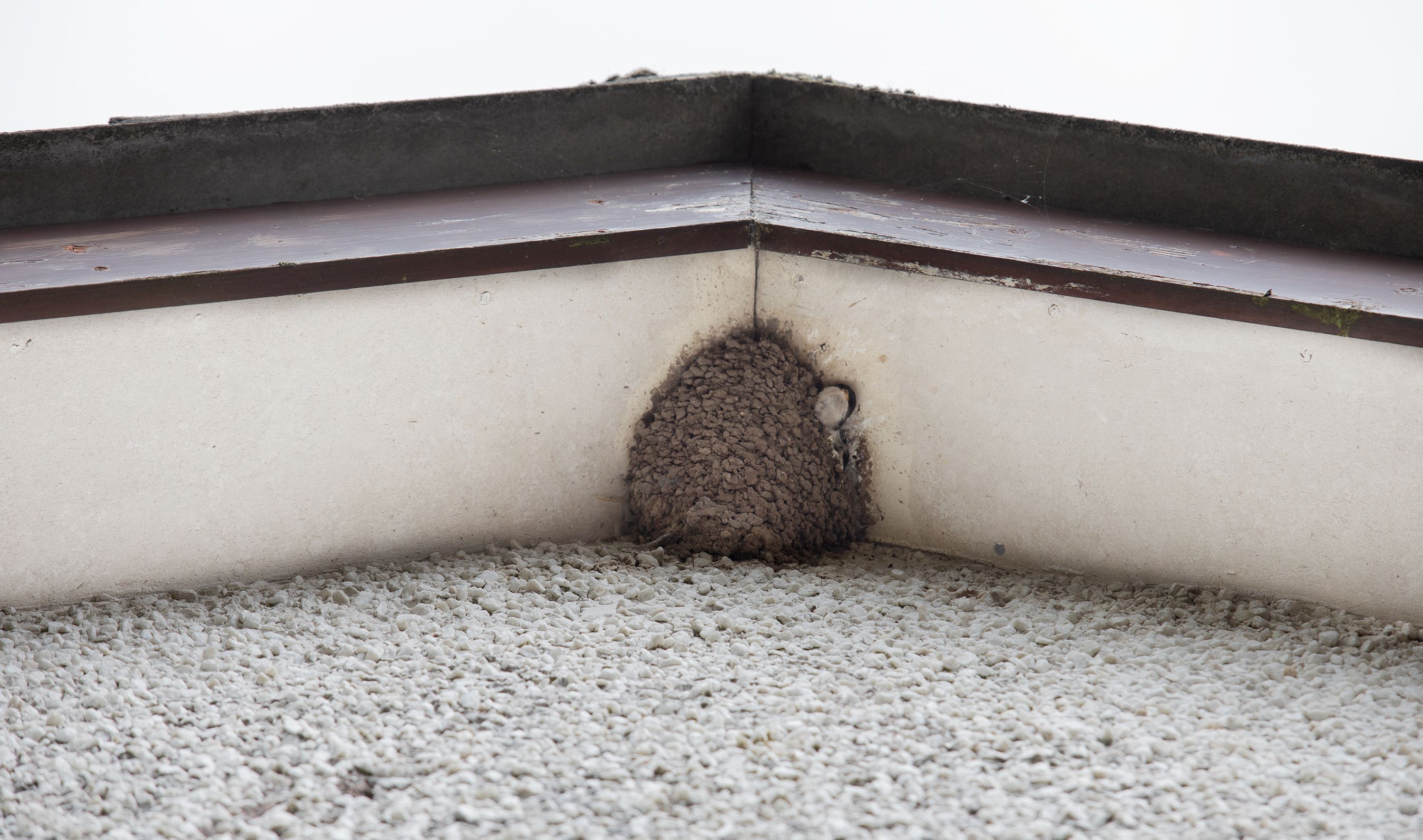
A few years back Dúlra bought plastic ready-made house martin nests and put them under the eaves of his home. Every day he blasts their calls out into the Belfast sky from a mini-speaker in the hope of coaxing them in, but so far he’s had no takers.
He’d dearly love to have them zooming around the house – he can only imagine the countless hours he'd spend admiring their aerial feats. That would be truly life-enriching. Some things money can’t buy – if only attracting house martins were as easy as taking out a Netflix subscription.
In the meantime, are there any houses for sale in Hannahstown?
•If you’ve seen or photographed anything interesting or have any nature questions, you can text Dúlra on 07801 414804.

